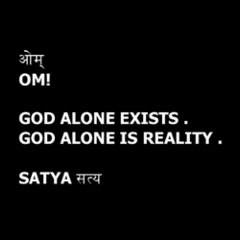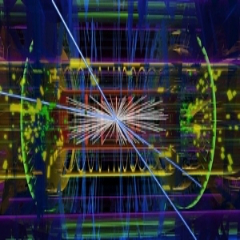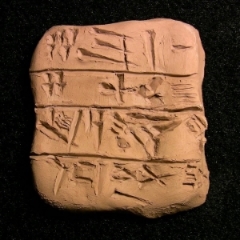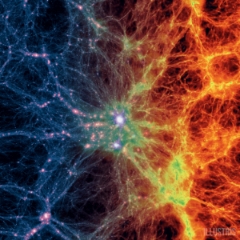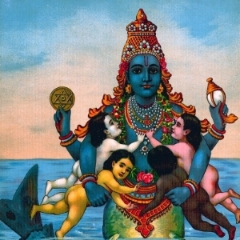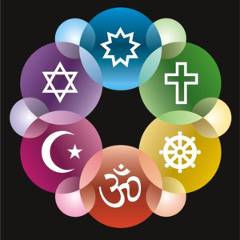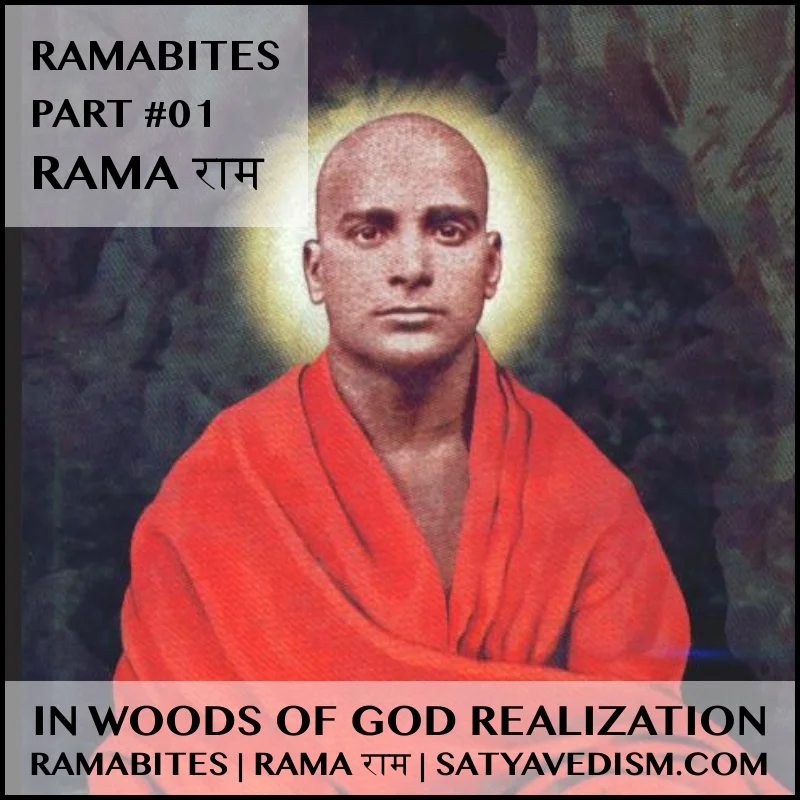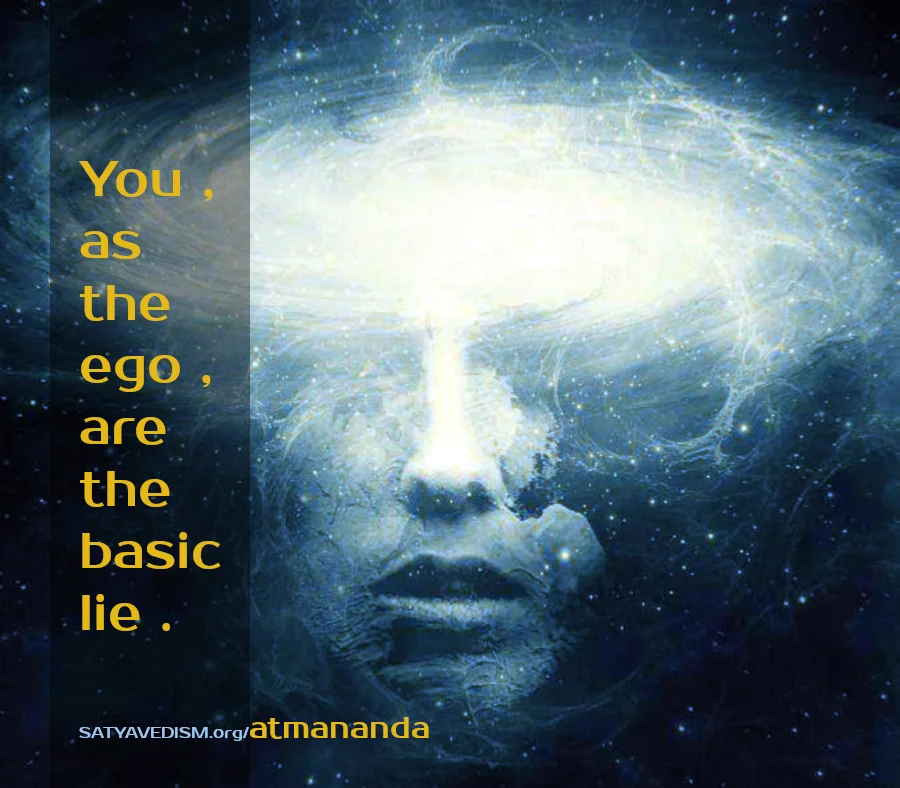PATANJALI YOGA | CHAPTER 1 | VERSE 01-02 | CWSV 1
| | homeTHE COMPLETE WORKS | VOLUME 1 | SWAMI VIVEKANANDA
|| SECTION 4 | PATANJALI'S YOGA SUTRAS | CHAPTER 1 ||
|| VERSE 01-02 | CONCENTRATION : ITS SPIRITUAL USES ||
अथ योगानुशासनम् ॥१॥
1 . Now concentration is explained . || 1.1 ||
योगश्चित्तवृत्तिनिरोधः ॥२॥
2 . Yoga is restraining the mind-stuff ( Chitta ) from taking various forms ( Vrittis ) . || 1.2 ||
A good deal of explanation is necessary here . We have to understand what Chitta is , and what the Vrittis are .
I have eyes . Eyes do not see . Take away the brain centre which is in the head , the eyes will still be there , the retinae complete , as also the pictures of objects on them and yet the eyes will not see . So the eyes are only a secondary instrument , not the organ of vision . The organ of vision is in a nerve centre of the brain . The two eyes will not be sufficient .
Sometimes one is asleep with eyes open . The light is there and the picture is there , but a third thing is necessary — the mind must be joined to the organ . The eye is the external instrument ; we need also the brain centre and the agency of the mind .
Carriages roll down a street , and you do not hear them . Why ? Because your mind has not attached itself to the organ of hearing .
First , there is the instrument , then there is the organ , and third , the mind attached to these two .
The mind takes the impression farther in , and presents it to the determinative faculty — Buddhi — which reacts . Along with this reaction flashes the idea of egoism .
Then this mixture of action and reaction is presented to the Purusha , the real Soul , who perceives an object in this mixture .
The organs ( Indriyas ) , together with the mind ( Manas ) , the determinative faculty ( Buddhi ) , and egoism ( Ahamkara ) , form the group called the Antahkarana ( the internal instrument ) . They are but various processes in the mind-stuff , called Chitta .
The waves of thought in the Chitta are called Vrittis ( literally " whirlpool " ) .
What is thought ? Thought is a force , as is gravitation or repulsion .
From the infinite storehouse of force in nature , the instrument called Chitta takes hold of some , absorbs it and sends it out as thought .
Force is supplied to us through food , and out of that food the body obtains the power of motion etc . Others , the finer forces , it throws out in what we call thought .
So we see that the mind is not intelligent ; yet it appears to be intelligent . Why ? Because the intelligent Soul is behind it . You are the only sentient being ; mind is only the instrument through which you catch the external world .
Take this book ; as a book it does not exist outside , what exists outside is unknown and unknowable . The unknowable furnishes the suggestion that gives a blow to the mind , and the mind gives out the reaction in the form of a book , in the same manner as when a stone is thrown into the water , the water is thrown against it in the form of waves .
The real Universe is the occasion of the reaction of the mind .
A book form , or an elephant form , or a human form , is not outside ; all that we know is our mental reaction from the outer suggestion .
" Matter is the permanent possibility of sensations " , said John Stuart Mill .
It is only the suggestion that is outside .
Take an oyster for example . You know how pearls are made . A parasite gets inside the shell and causes irritation , and the oyster throws a sort of enamelling round it , and this makes the pearl .
The Universe of experience is our own enamel , so to say , and the real Universe is the parasite serving as nucleus . The ordinary human will never understand it , because when one tries to do so , one throws out an enamel , and sees only one's own enamel . Now we understand what is meant by these Vrittis .
The real is behind the mind ; the mind is the instrument in one's hands ; it is one's intelligence that is percolating through the mind . It is only when you stand behind the mind that it becomes intelligent . When one gives it up , it falls to pieces and is nothing . Thus you understand what is meant by Chitta . It is the mind-stuff , and Vrittis are the waves and ripples rising in it when external causes impinge on it . These Vrittis are our Universe .
The bottom of a lake we cannot see , because its surface is covered with ripples . It is only possible for us to catch a glimpse of the bottom , when the ripples have subsided , and the water is calm . If the water is muddy or is agitated all the time , the bottom will not be seen . If it is clear , and there are no waves , we shall see the bottom . The bottom of the lake is our own true Self ; the lake is the Chitta and the waves the Vrittis .
Again , the mind is in three states , one of which is darkness , called Tamas , found in brutes and idiots ; it only acts to injure . No other idea comes into that state of mind .
Then there is the active state of mind , Rajas , whose chief motives are power and enjoyment . " I will be powerful and rule others . "
Then there is the state called Sattva , serenity , calmness , in which the waves cease , and the water of the mind-lake becomes clear . It is not inactive , but rather intensely active . It is the greatest manifestation of power to be calm .
It is easy to be active . Let the reins go , and the horses will run away with you . Anyone can do that , but one who can stop the plunging horses is the strong person . Which requires the greater strength , letting go or restraining ?
The calm person is not the person who is dull . You must not mistake Sattva for dullness or laziness . The calm person is the one who has control over the mind waves .
Activity is the manifestation of inferior strength , calmness , of the superior .
The Chitta is always trying to get back to its natural pure state , but the organs draw it out . To restrain it , to check this outward tendency , and to start it on the return journey to the essence of intelligence is the first step in Yoga , because only in this way can the Chitta get into its proper course . . .
The Chitta manifests itself in the following forms —
1 . Scattering ,
2 . Darkening ,
3 . Gathering ,
4 . One-pointed ,
5 . Concentrated .
1 . The Scattering form is activity . Its tendency is to manifest in the form of pleasure or of pain .
2 . The Darkening form is dullness which tends to injury .
3 . The Gathering form is when it struggles to centre itself .
The commentator says , the third form is natural to the Devas , the angels , and the first and second to the demons .
4 . The One-pointed form is when it tries to concentrate .
5 . The Concentrated form is what brings us to Samadhi .
SOURCE | SATYAVEDISM.ORG











